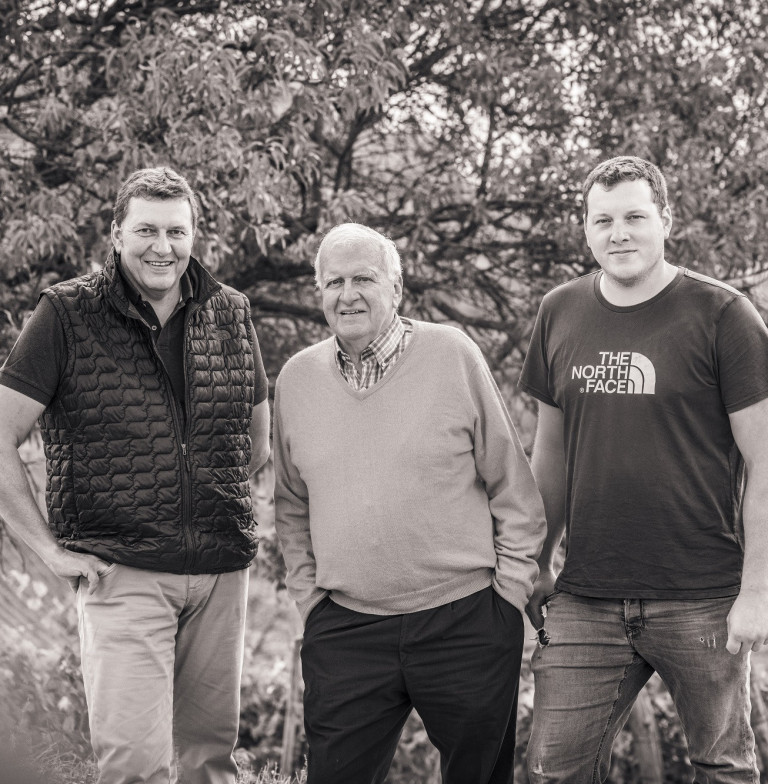
The Zind & Humbrecht families
The Domaine Zind Humbrecht was created in 1959 by the fusion of two winegrowing families, the Humbrecht family from Gueberschwihr and the Zind family from Wintzenheim. Before 1959 both families produced and commercialized their wines under their respective family names.
Vignerons, father and son, since the Thirty Year War in 1620, the Humbrecht family has a long winegrowing history, established in the village of Gueberschwihr up until the end of the 20th century with Zénon Humbrecht.
The Humbrecht Family Tree, the descendants of Sontag Humbrecht Winegrowers from Father to Son since 1620 :
- Pierre Emile Humbrecht 1993
- Olivier Humbrecht 1963
- Léonard Humbrecht 1935
- Joseph Zénon Humbrecht 1906–2001
- Joseph Humbrecht 1877-1951
- Joseph Stanislas Humbrecht 1849-1924
- Paul Humbrecht 1808-1892
- Jean Humbrecht, 1774-1837
- Antoine Humbrecht 1732-1783
- François Antoine Humbrecht 1702-1735
- Jean Humbrecht 1672-1723
- Jean Jacques Humbrecht 1645-1716
- Sontag Humbrecht 1620-1682
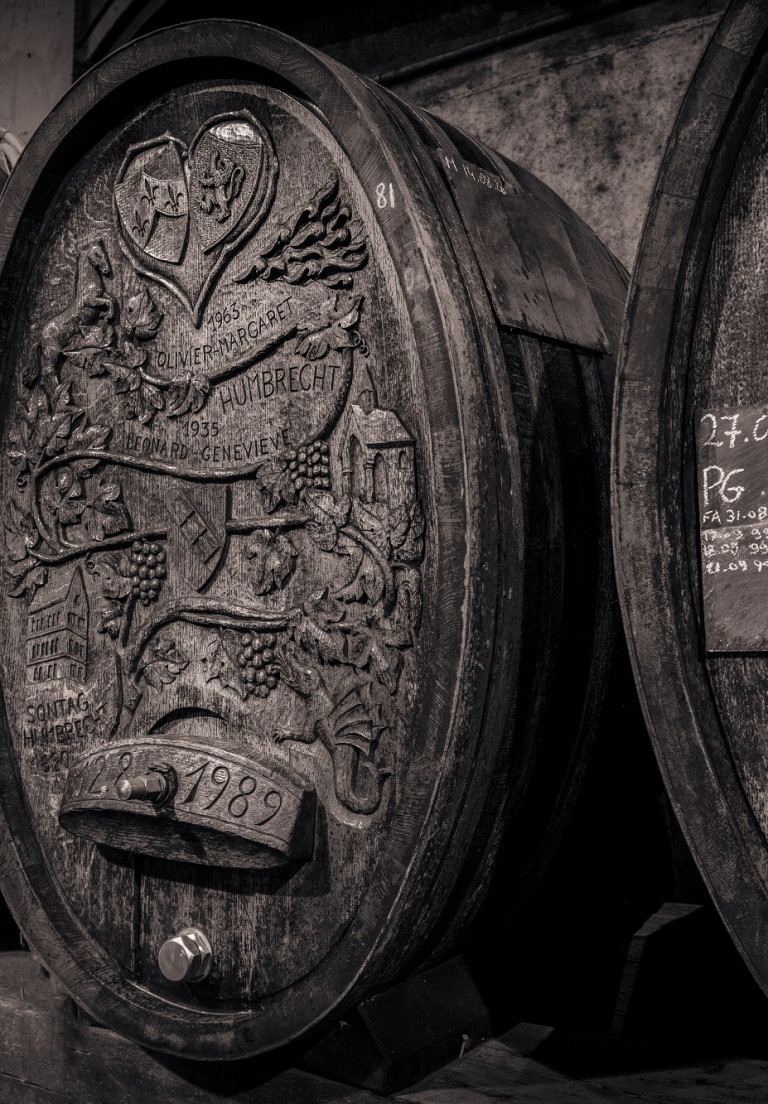
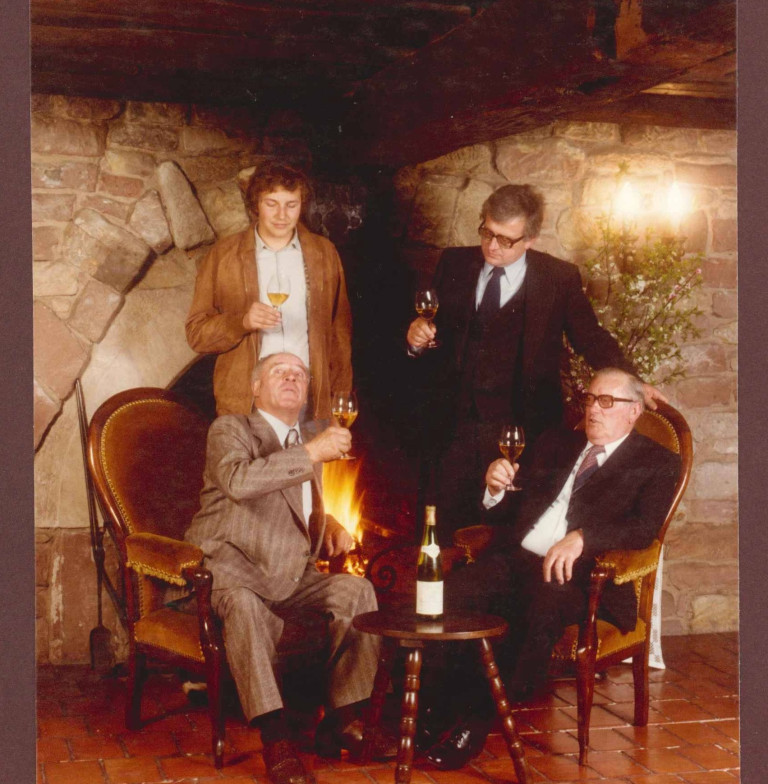
Zénon Humbrecht (1906 – 2001)
He was winegrower in Gueberschwihr who cultivated, amongst other vineyards, the Goldert Grand Cru. The wines were vinified in a historical cellar in the center of the old village and only the wines destined for the family’s private cellar were bottled, the rest being sold to Alsatian wine merchants, négociants.
Emile Zind (1910 – 1983)
He was winegrower in Wintzenheim who cultivated vineyard parcels in the Hengst Grand Cru, lieux dit of Rotenberg and the Herrenweg vineyards in the neighbouring village of Turckheim. He started to bottle and commercialise his own wines in 1947, making and selling the wines without passing by wine merchants, a rare feat at this point in time. One of his first renowned clients was the Société des Bains de Mer (Hotel de Paris) in Monte Carlo who bought a great deal of Gewurztraminer. Although it is nigh on impossible to prove, the story goes that this wine was especially appreciated by a famous client (former English Prime Minister, wine lover and cigar connoisseur) who was often in the Côte d’Azur in the years following the war…
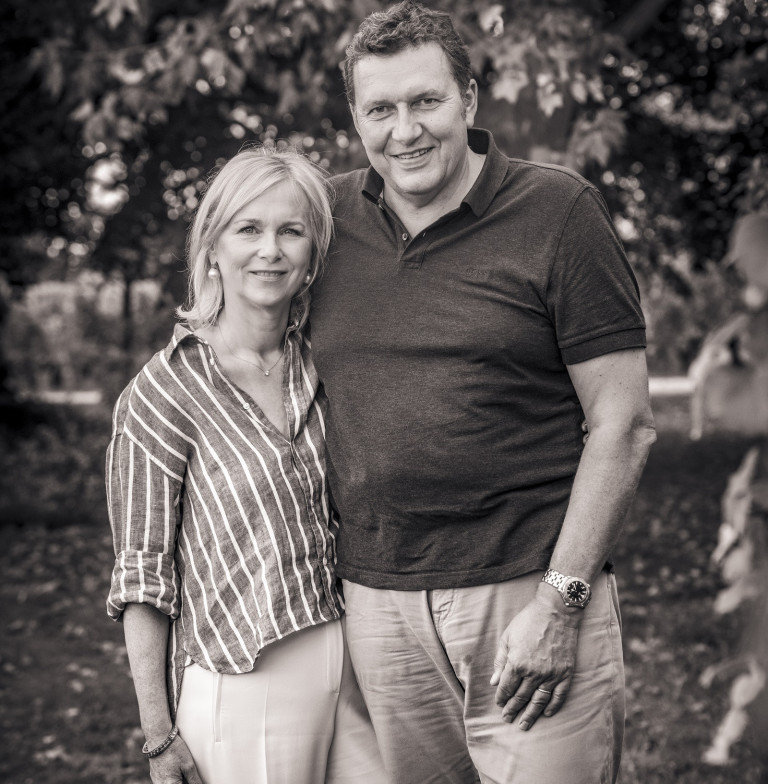
Léonard and Geneviève Humbrecht
The marriage of Léonard Humbrecht and Geneviève Zind (daughter of Alice and Emile Zind) brought the two small family Domaines together in 1959 and started what is today known as Domaine Zind Humbrecht. They built a new cellar in the village of Wintzenheim and set out to further grow the Domaine.
During the 1960’s and 1970’s some of the greatest terroirs in Alsace were left abandoned. These terroirs were usually on steep slopes which made them difficult to work and lower yielding. The flatter and more fertile vineyards on the valley floor which were easier to cultivate became more sought after. With his vision and focus on great terroir, Léonard Humbrecht started to collect the best parcels on the historic hillsides. He started by acquiring vineyards at the origins of the family Domaines, in the villages of Gueberschwihr and Wintzenheim. The Domaine rapidly expanded with vineyard acquisitions in the Herrenweg de Turckheim, the Clos Hauserer in Wintzenheim (1973), the Clos Saint Urbain in the Rangen de Thann (1977), the Brand in Turckheim (1978), the Clos Jebsal and Heimbourg in Turckheim (1983) and finally the Clos Windsbuhl in Hunawihr (1987). With less than 5ha of vineyard surface in the beginning of the 1960’s, the Domaine today comprises of just over 40ha.
Léonard Humbrecht has always been impassioned by terroir and the foundations of the Domaine are based on respecting the terroir-grape variety rapport. Finding the harmony between the grape variety and the terroir on which it is grown, allows for the production of great wines. Léonard has also always been a fervent believer of lower yields and higher planting densities for quality wines, like the 10 000 vines/ha in the Rangen de Thann. Leonard was the president of the “Syndicat de defense des Grands Crus d’Alsace” for many years and one of the linchpins for the creation of the Grand Cru classification system in Alsace.
Whilst respecting winemaking tradition (vinifying on lees in traditional large oak casks with indigenous yeasts and no filtration until bottling), Léonard was also at the forefront of winemaking techniques which have since become the norm in cellars throughout Alsace.
Olivier and Margaret Humbrecht
Today the Domaine is run by Olivier and Margaret Humbrecht who took over the reins from Léonard and Geneviève Humbrecht and have been working together at the Domaine since 1989. Their son Pierre Emile, joined the domaine in 2019.
A new cellar was completed in the heart of the Herrenweg vineyards in 1992. This project was the result of a long and careful consideration which took nearly three years to complete. During this period quite a few winemaking techniques were indefinitely abandoned. Chaptilisation and fining were no longer necessary and were replaced by longer pressing cycles, “elevage” on lees for a minimum of 8 months and especially longer, slower fermentations taking a whole year (sometimes longer) to finish. In the beginning of the nineties, the decision was also made to postpone the bottling to 12 or 18 months after harvest prioritizing the “elevage” of the wines. At this stage the vines were also ready for a big change. Trials for the production of our own compost convinced us of the merits of bio-dynamic agriculture and in 1997 the Domaine started practicing bio-dynamic agriculture.
The Domaine was certified organic by Ecocert in 1998; the same year the Domaine joined the Biodyvin group. In 2002 when biodynamic viticulture was certified by Ecocert for Biodyvin, Domaine Zind Humbrecht was certified for biodynamic viticulture. A reference to biodynamic certification has been used on the wine labels since 2007. Since 2002 Olivier Humbrecht has been president of the SIVCBD (Biodyvin).
The implementation of biodynamic principles provoked numerous changes at the Domaine: an important increase in the number of vineyard workers (23 permanent staff working in the vines in 2010) and a profound change in viticultural practices, notably abandoning the practice of hedging or topping the vines between 2001 and 2003 and introducing lightweight tractors/ crawlers and animal traction (1999) for ploughing.
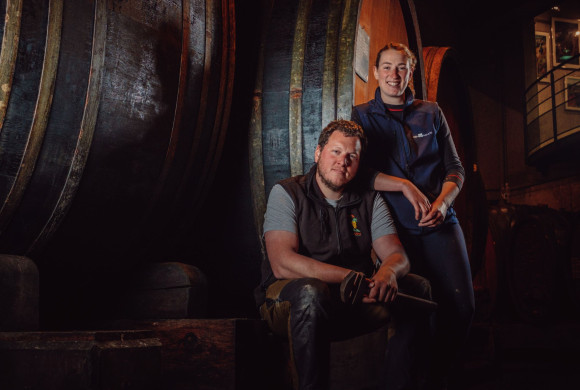
Newsletter
Register you to keep in touch with Domaine Zind Humbrecht and receive our news.